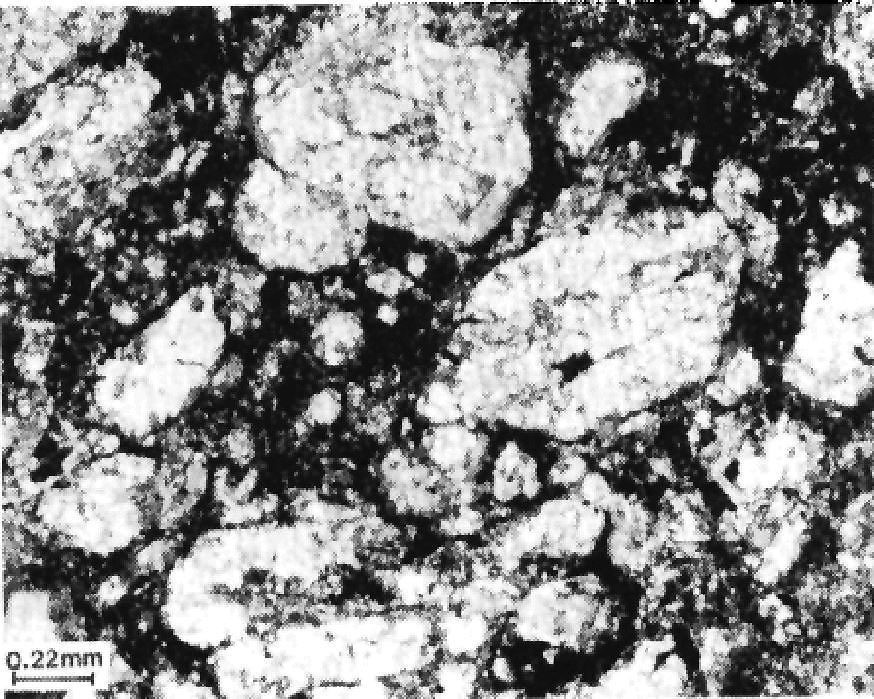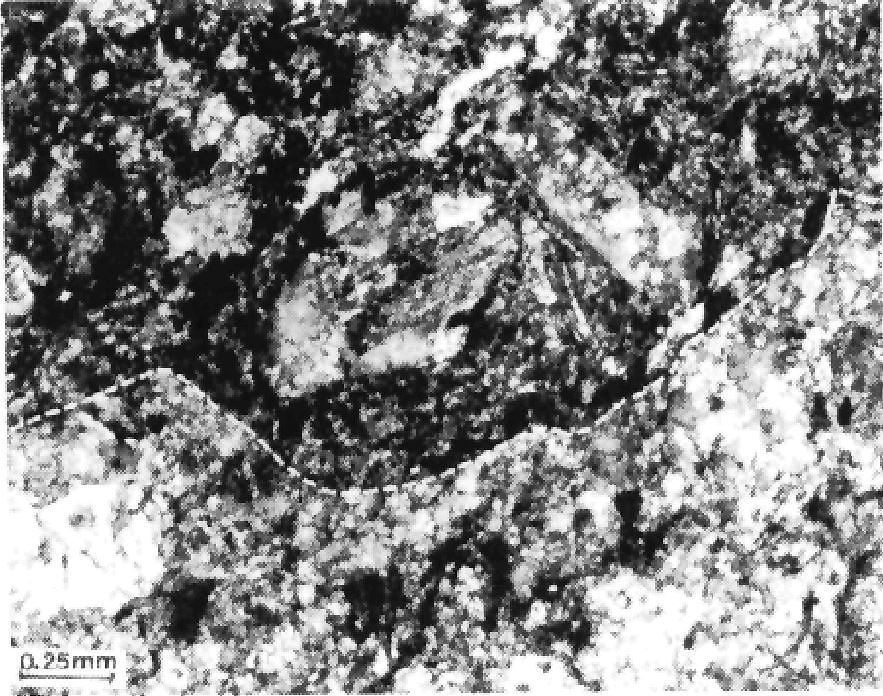
DISCLAIMER: This English version is translated from the original French. In case of any discrepancy, the French version shall prevail.
| Author(s): | Birkett and Clark, 1991 |
| Age: | Paleoproterozoic |
| Stratotype: | None |
| Type area: | Le Moyne Lake area (NTS sheets 24C16, 24F01 and 24F02) |
| Geological province: | Churchill Province |
| Geological subdivision: | New Quebec Orogen (Labrador Trough) / Gerido Lithotectonic Zone |
| Lithology: | Carbonatitic tuff, mafic and ultramafic tuff, conglomerate, carbonatite, ultramafic rocks |
| Category: | Lithodemic |
| Rank: | Complex |
| Status: | Formal |
| Use: | Active |
None
Background
The Le Moyne Lake area was mapped by Dressler (1979) as part of a regional geological survey in the central part of the Labrador Trough. Carbonatite was not recognized and some of the carbonate rocks to the west of Le Moyne Lake were mapped by Dressler (1979) as dolomites of the Nachicapau Formation (now abandoned). Rocks now assigned to the Le Moyne Carbonatite Complex were discovered in 1981 by Eldor Resources (Lafontaine, 1984) during a regional geological survey near Le Moyne Lake. Subsequently, further exploration work was carried out in the area by Unocal Canada (Knox, 1986) and Virginia Mines (Demers and Blanchet, 2001). Since 2007, the carbonatite complex was the subject of various exploration campaigns for Nb-Ta and rare earth element mineralization by Commerce Resources (Smith et al., 2008, 2010, 2014; Smith and Brown, 2016; Smith, 2018). Carbonatitic rocks of the complex have also been the subject of several lithological, mineralogical and petrographic studies (e.g., Birkett and Clark, unpublished data; Wright, 1997; Wright et al., 1998; Mitchell, 2009; Tyson, 2011; Mitchell and Smith, 2017; Beland and Williams-Jones, 2021).
The name « Le Moyne Carbonatite » was introduced by Birkett and Clark (1991) to refer to a major carbonatite intrusion accompanied by mafic and ultramafic tuff and associated sedimentary rocks, west of Le Moyne Lake, from which the unit takes its name. It was also referred to as the following names: Lac Lemoyne Complex (Bilodeau and Clark, 1997), « Le Moyne intrusion », « Eldor carbonatitic complex », « Eldor carbonatite » and « Eldor complex » (Smith et al., 2008, 2010, 2014; Smith and Brown, 2016; Mitchell and Smith, 2017; Smith, 2018). The name « Le Moyne Carbonatite Complex » was formally adopted for the purposes of this stratigraphic record.
Description
The Le Moyne Carbonatite Complex has a very complex geology. It is described as a unit composed of intrusive and extrusive lithofacies (Birkett and Clark, 1991; Clark and Wares, 2004). Intrusive lithofacies are massive or brecciated and include radioactive mineral carbonatite (pPlem6) and ultramafic carbonatite (pPlem5). Extrusive lithofacies are found at the margin of the complex and are interpreted as a possible volcanic apron. They consist of mafic and ultramafic tuff (pPlem2), generally mafic carbonatitic tuff containing radioactive minerals (pPlem1) and conglomerate (pPlem3). Some small ultramafic masses (pPlem7) are also present to the NW of the complex (Dressler, 1979). It should be noted that the presence of extrusive carbonatitic lithofacies is, however, a matter of debate (Smith and Brown, 2016). Recent studies suggest that units interpreted as extrusive may be cataclastic and mylonitic breccias formed at the margins of the complex during cooling of intrusions, coupled with deformation and metamorphism of the complex (Mitchell and Smith, 2017).
Rare earth element profiles normalized to chondrites of rocks of the complex form three groups. They have no europium anomalies. Mafic volcanic rocks have moderate slopes and variable rare earth contents. Most of the carbonatite samples have steeper slopes and moderate rare earth contents. Mineralized carbonatites exhibit high enrichment of light rare earths relative to heavy rare earths (Birkett and Clark, 1991).
The Le Moyne Carbonatite Complex was emplaced in a platform environment towards the end of the second volcano-sedimentary cycle of the Trough (at 1.87 Ga). According to Clark and Wares (2004), the complex represents the manifestation of alkaline magmatism near the continental margin. This alkaline magmatism would be contemporaneous with the end of MORB-type mafic magmatism in the surrounding ocean basin. The emplacement of the complex would have been accompanied by several carbonatite intrusive phases (calciocarbonatite, magnesiocarbonatite, ferrocarbonatite) (Wright et al., 1998; Demers and Blanchet, 2001). A recent interpretation indicates that Le Moyne carbonatite was emplaced during several magmatic episodes as sills and dykes. The carbonatite and surrounding rocks were brecciated and metasomatised (Smith, 2018).
Rocks of the Le Moyne Carbonatite Complex were metamorphosed to the greenschist facies (Dimroth and Dressler, 1978). Alteration envelopes several hundred metres thick, consisting of fenite and dolomite (Demers and Blanchet, 2001; Smith, 2018), are noted around the intrusions. Rocks were deformed within the Kaniapiskau Supergroup during the Hudsonian orogenesis (Birkett and Clark, 1991).
The economic potential of the Le Moyne Carbonatite Complex lies in niobium-tantalum, rare earth and apatite mineralization hosted in the carbonatite intrusion (Ashram (Eldor) mineralized zone) (Birkett and Clark, 1991; Clark and Wares, 2004).
Le Moyne Carbonatite Complex 1 (pPlem1): Mostly Mafic Carbonatitic Tuff Containing Radioactive Minerals
Unit pPlem1 is located at the margin of the complex. It consists of generally mafic carbonatitic tuff containing radioactive minerals (Birkett and Clark, 1991; Clark and Wares, 2004). Dressler (1979) referred to some of the rocks in this unit as the dolomite of the Nachicapau Formation (now abandoned) during regional mapping.
Le Moyne Carbonatite Complex 2 (pPlem2): Mafic and Ultramafic Tuff
Unit pPlem2 occurs at the margin of the complex, near its eastern margin. It consists mainly of mafic and ultramafic tuff associated with carbonatite (pPlem6) (Birkett and Clark, 1991; Clark and Wares, 2004). The unit is referred to as a « biotite-albite schist » and « massive grey unit » by Commerce Resources and is described in part as being mica-rich. According to Birkett and Clark (1991), tuffs are generally sodic, but potassic rocks are also present.
Le Moyne Carbonatite Complex 3 (pPlem3): Conglomerate
Unit pPlem3 consists of conglomerate. It forms a ~3 km long NW-SE strip interbedded with mafic and ultramafic tuff of unit pPlem2 (Clark and Wares, 2004).
Le Moyne Carbonatite Complex 5 (pPlem5): Ultramafic Carbonatite
Unit pPlem5 is located in the NW part of the complex. It is an intrusive unit of ultramafic carbonatite, commonly brecciated (Birkett and Clark, 1991; Clark and Wares, 2004).
Le Moyne Carbonatite Complex 6 (pPlem6): Carbonatite Containing Radioactive Minerals
Unit pPlem6 is an intrusive unit of carbonatite containing radioactive minerals (Birkett and Clark, 1991; Clark and Wares, 2004). The rock is light to dark olive green, dark brown-green, cream to white or grey, massive and commonly brecciated. Carbonatite is locally heterogeneous and has a wide variety of textures: schlieren carbonatite, medium to coarse-grained granular carbonatite, fine-grained carbonatite, generally with a mosaic texture, and colloform carbonatite. The mineralogy of the different varieties of carbonatite is very similar despite the diversity of their textures (Mitchell and Smith, 2017). Carbonatite is composed mainly of calcite, dolomite, ankerite and siderite. Accessory minerals include biotite, phlogopite, apatite, magnetite, fluorite, quartz and pyrite (Birkett and Clark, 1991; Clark and Wares, 2004; Mitchell and Smith, 2017; Smith, 2018). Green mica (fuchsite) was observed locally (Birkett and Clark, unpublished data; Demers and Blanchet, 2001). The presence of glimmerite (an igneous rock enriched in phlogopite and pyrochlore) was noted by Wright et al. (1998). This rock appears to occur mainly at the margin of the complex (Mitchell and Smith, 2017). Carbonatite was extensively altered to ferrodolomite by metasomatism at the periphery of the intrusions (Demers and Blanchet, 2001; Smith, 2018).
Carbonatite of unit pPlem6 hosts niobium-tantalum and rare earth mineralization of the Ashram (Eldor) zone. Mineralization consists of pyrochlore or columbite (Nb-Ta) and monazite and bastnaesite (REE) (Lafontaine, 1984; Birkett and Clark, 1991; Clark and Wares, 2004; Mitchell and Smith, 2017; Smith, 2018). According to Wright et al. (1998), glimmerite has a better potential for pyrochlore than carbonatite. Wright et al. (1998) also noted that apatite is ubiquitous in the complex and makes up ~30% of the carbonatite unit, suggesting a likely potential for phosphorus. A detailed description of the geology and mineralogy of the Ashram (Eldor) mineralized zone is presented by Mitchell and Smith (2017).
Le Moyne Carbonatite Complex 7 (pPlem7): Ultramafic Rocks Metamorphosed to Biotite-Phlogopite, Carbonate, Actinolite, Titanite ± Garnet ± Epidote ± Chlorite ± Magnetite ± Apatite Rocks
 Unit pPlem7 occurs as small isolated masses of metamorphosed ultramafic rocks. The rock is greenish grey, fine to medium grained, locally slightly foliated and displays spheroidal alteration. Primary characteristics are almost completely obliterated due to extensive alteration. In thin sections, primary minerals such as olivine and pyroxene are completely replaced. The rock is composed of mass of biotite-phlogopite (11-20%), actinolite or tremolite (12-32%), carbonate (1-12%), titanite (10-26%) and variable amounts of leucoxene, garnet, epidote, chlorite, apatite and opaque minerals. Garnet consists of titanium-rich andradite. Saussuritized plagioclase is observed in some thin sections. Apatite forms large subhedral needles up to 2 mm long. Opaque minerals consist of magnetite, pyrrhotite and chalcopyrite (Dressler, 1979).
Unit pPlem7 occurs as small isolated masses of metamorphosed ultramafic rocks. The rock is greenish grey, fine to medium grained, locally slightly foliated and displays spheroidal alteration. Primary characteristics are almost completely obliterated due to extensive alteration. In thin sections, primary minerals such as olivine and pyroxene are completely replaced. The rock is composed of mass of biotite-phlogopite (11-20%), actinolite or tremolite (12-32%), carbonate (1-12%), titanite (10-26%) and variable amounts of leucoxene, garnet, epidote, chlorite, apatite and opaque minerals. Garnet consists of titanium-rich andradite. Saussuritized plagioclase is observed in some thin sections. Apatite forms large subhedral needles up to 2 mm long. Opaque minerals consist of magnetite, pyrrhotite and chalcopyrite (Dressler, 1979).
 In the area of Erich-Dimroth Lake (sheet 24F02), Dressler (1979) describes a completely carbonatized rock which he associates with unit pPlem7. The rock is dark grey, fine grained and has a rusty patina. In thin sections, it is composed of carbonate (70%) and biotite replacing olivine and pyroxene. The pseudomorphs of these are surrounded by fine needles of carbonate, biotite and opaque minerals. Biotite is light brown to almost colourless. Fresh, anhedral plagioclase is also observed. Pyrrhotite, chalcopyrite and magnetite make up the opaque minerals (Dressler, 1979).
In the area of Erich-Dimroth Lake (sheet 24F02), Dressler (1979) describes a completely carbonatized rock which he associates with unit pPlem7. The rock is dark grey, fine grained and has a rusty patina. In thin sections, it is composed of carbonate (70%) and biotite replacing olivine and pyroxene. The pseudomorphs of these are surrounded by fine needles of carbonate, biotite and opaque minerals. Biotite is light brown to almost colourless. Fresh, anhedral plagioclase is also observed. Pyrrhotite, chalcopyrite and magnetite make up the opaque minerals (Dressler, 1979).
Thickness and Distribution
The Le Moyne Carbonatite Complex belongs to the allochthonous Gerido Lithotectonic Zone as defined by Clark and Wares (2004). It is located near the eastern margin of the Labrador Trough, west of Le Moyne Lake (sheet 24C16). The complex is elliptical and is estimated to be >15 km long and ~4 km wide (Clark and Wares, 2004). A few small isolated ultramafic masses were recognized by Dressler (1979) in the area between Jogues Lake and Le Moyne Lake. The margins of the complex are subparallel to the dominant regional direction of the surrounding rocks, namely NW-SE. The eastern margin is poorly circumscribed and appears to occur west of a major thrust fault (Hérodier Fault). The western margin of the complex is defined by rocks of the Douay Formation.
Dating
None.
Stratigraphic Relationship(s)
The Le Moyne Carbonatite Complex is Paleoproterozoic in age. Rocks of the complex were emplaced in the volcano-sedimentary sequence of the Le Moyne Group towards the end of the second cycle of the Labrador Trough (1.88-1.87 Ga) (Clark and Wares, 2004). Machado et al. (1997) obtained an age of 1870 ±4 Ma for rhyodacite of the Douay Formation (Le Moyne Group), the youngest age for rocks of the second cycle. The complex is therefore contemporaneous with the Le Moyne Group (Machado et al., 1997; Clark and Wares, 2004). Based on the age obtained, the volcano-sedimentary sequence of the Le Moyne Group and associated Le Moyne carbonatite can be correlated with the Hellancourt Formation (Koksoak Group), dated 1874 ±3 Ma (Machado et al., 1997; Clark and Wares, 2004). The Le Moyne Carbonatite Complex is thought to be ≥4 Ma younger than the Castignon Volcanic Complex, dated 1880 ±2 Ma (Chevé and Machado, 1988).
Near latitude 57°N, the Le Moyne Carbonatite Complex locally overlies rocks of the Baby Formation (Koksoak Group) and pyroclastic rocks of the Murdoch Formation (Doublet Group) (Birkett and Clark, 1991; Machado et al., 1997). Between Jogues and Le Moyne lakes (sheet 24F02), Dressler (1979) described small ultramafic masses outcropping locally in an area dominated by coarse-grained detrital sedimentary rocks, tuffaceous dolomite, dolomitic tuff and agglomerate belonging to the Aulneau Formation. Dressler (1979) did not observe any contacts.
Paleontology
Does not apply.
References
Publications Available Through SIGÉOM Examine
BILODEAU, C., CLARK, T. 1997. COMPILATION GÉOSCIENTIFIQUE, GÉOLOGIE 1/50 000, 24C16 – LAC MARCEL. In: MRNF, 2010. CARTE(S) GÉOLOGIQUE(S) DU SIGEOM – feuillet 24C. CG SIGEOM24C, 14 plans.
CLARK, T., WARES, R., 2004. SYNTHESE LITHOTECTONIQUE ET METALLOGENIQUE DE L’OROGENE DU NOUVEAU-QUEBEC (FOSSE DU LABRADOR). MRNFP; MM 2004-01, 182 pages, 1 plan.
DEMERS, M., BLANCHET, C., 2001. RECONNAISSANCE GEOLOGIQUE, AOUT 2001, PROPRIETE LAC ERLANDSON-TA. MINES D’OR VIRGINIA INC, Assessment report submitted to the Government of Québec; GM 59926, 99 pages, 3 plans.
DRESSLER, B., CIESIELSKI, A., 1979. Région de la fosse du Labrador. MRN; RG 195, 136 pages, 14 plans.
LAFONTAINE, M., 1984. PROSPECTION ET CARTOGRAPHIE. RESSOURCES ELDOR LTEE, Assessment report submitted to the Government of Québec; GM 40910, 18 pages, 3 plans.
MITCHELL, R H., 2009. PETROGRAPHIC REPORTS, ELDOR CARBONATITES. COMMERCE RESOURCES CORPORATION, Assessment report submitted to the Government of Québec; GM 65325, 260 pages.
SMITH, D L., 2018. 2015-2016-2017 exploration of the Eldor property. COMMERCE RESOURCES CORPORATION, Assessment report submitted to the Government of Québec; GM 70641, 831 pages.
SMITH, D L., BROWN, J., 2016. 2012, 2013 AND 2014 EXPLORATION OF THE ELDOR PROPERTY. COMMERCE RESOURCES CORPORATION, Assessment report submitted to the Government of Québec; GM 69372, 671 pages, 4 plans.
SMITH, D L., D’SOUZA, R., KNOX, A W., CHARLTON, J P., CHEMAM, M., BOUCHER, S., 2008. 2007 EXPLORATION OF THE ELDOR PROPERTY. COMMERCE RESOURCES CORPORATION, Assessment report submitted to the Government of Québec; GM 64494, 333 pages, 31 plans.
SMITH, D L., KNOX, A., GUO, M., D’ROUZA, R., WANG, T., 2010. 2008 AND 2009 EXPLORATION OF THE ELDOR PROPERTY. COMMERCE RESOURCES CORPORATION, Assessment report submitted to the Government of Québec GM 65246, 1475 pages, 25 plans.
SMITH, D L., SCHMIDT, N., CARTER, M., 2014. 2010 AND 2011 EXPLORATION OF THE ELDOR PROPERTY. COMMERCE RESOURCES CORPORATION, Assessment report submitted to the Government of Québec; GM 68871, 4321 pages.
TYSON, R., 2011. MINERALOGY, LITHOLOGY, PARAGENISIS AND DATING OF THE ELDOR CARBONATITE, WORK IN PROGRESS. COMMERCE RESOURCES CORPORATION, Assessment report submitted to the Government of Québec; GM 68875, 283 pages, 1 plan.
Other Publications
BELAND, C.M.J.; WILLIAMS-JONES, A. E. 2021. The genesis of the Ashram REE deposit, Quebec: Insights from bulk-rock geochemistry, apatite-monazite-bastnäsite replacement reactions and mineral chemistry. Chemical Geology; Volume 578. https://doi.org/10.1016/j.chemgeo.2021.120298
BIRKETT, T.C., CLARK, T. 1991. Géologie et potentiel métallifère de la carbonatite protérozoïque du lac LeMoyne dans le nord du Québec. Geological Survey of Canada; Work in Progress Forum, Programme and Abstracts, page 20.
CHEVÉ, S.R., MACHADO, N. 1988. Reinvestigation of the Castignon Lake carbonatite complex, Labrador Trough, New Québec. Joint Annual Meeting of the Geological Association of Canada and the Mineralogical Association of Canada, St. John’s, Newfoundland; Program with Abstracts, volume 13, page 20.
DIMROTH, E., DRESSLER, B. 1978. Metamorphism of the Labrador Trough. In Metamorphism in the Canadian Shield. Geological Survey of Canada; Paper 78-10, pages 215-236. http://doi.org/10.4095/104534
KNOX, A.W. 1986. 1985 Field Examination, Eldor Carbonatite, Quebec. Unocal Canada Ltd. Rept. 71 pages, 3 maps.
MACHADO, N., CLARK, T., DAVID, J., GOULET, N. 1997. U-Pb ages for magmatism and deformation in the New Quebec Orogen. Canadian Journal of Earth Sciences; volume 34, pages 716-723. http://doi.org/10.1139/e17-058
MITCHELL, R.H., SMITH, D.L. 2017. Geology and mineralogy of the Ashram Zone carbonatite, Eldor Complex, Québec. Ore Geology Reviews; volume 86, pages 784-806. http://dx.doi.org/10.1016/j.oregeorev.2017.04.004
WRIGHT, W.R. 1997. Mineralogy, petrology, petrogenesis, and geochemistry of the Eldor carbonatite complex, Labrador Trough, Quebec, Canada. University of Missouri; MS thesis, 200 pages. scholarsmine.mst.edu/masters_theses/1636
WRIGHT, W.R., MARIANO, A.N., HAGNI, R.G. 1998. Pyrochlore, mineralization, and glimmerite formation in the Eldor (Lake LeMoyne) carbonatite complex, Labrador Trough, Quebec, Canada. In: Proceedings 33rd Forum on the Geology of Industrial Minerals, (M. Bélanger, T. Clark and H.-L. Jacob, editors). Canadian Institue of Mining, Metallurgy and Petroleum; special volume 50, pages 205-213.
Suggested Citation
Ministère de l’Énergie et des Ressources naturelles (MERN). Le Moyne Carbonatite complex. Quebec Stratigraphic Lexicon. https://gq.mines.gouv.qc.ca/lexique-stratigraphique/province-de-churchill/complexe-carbonatitique-de-le-moyne_en [accessed on Day Month Year].
Contributors
First publication | Charles St-Hilaire, GIT, M.Sc. charles.st-hilaire@mern.gouv.qc.ca; Thomas Clark, P. Geo., Ph.D. (redaction) Mehdi A. Guemache, P. Geo., Ph.D. (coordination); anonymous (critical review); Simon Auclair, P. Geo., M.Sc. (editing); Céline Dupuis, P. Geo., Ph.D. (English version); Ricardo Escobar Moran (HTML editing). |

